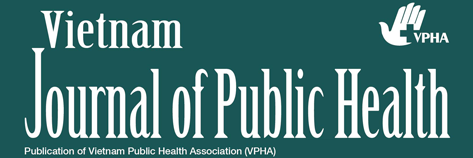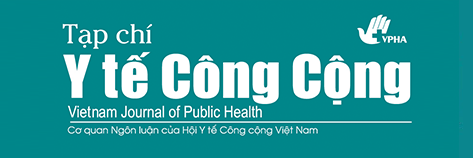Nguồn nhân lực y tế ở Đông Nam Á: NHỮNG THIẾU HỤT, THÁCH THỨC TRONG PHÂN BỐ VÀ THƯƠNG MẠI QUỐC TẾ TRONG DỊCH VỤ Y TẾ
Tóm tắt
Trong bài viết này chúng tôi đề cập đến các vấn đề về thiếu hụt và phân bố không đồng đều cán bộ y tế tại Đông Nam Á trong bối cảnh có thương mại quốc tế trong các dịch vụ y tế. Mặc dù nhìn chung, hiện tượng thiếu hụt nhân lực y tế không xảy ra trong khu vực nhưng phân tích riêng biệt cho thấy 5 nước thu nhập thấp lại có những thiếu hụt đó. Tất cả các nước ở Đông Nam Á đều phải đối mặt với những khó khăn về nhân lực y tế phân bố không đồng đều và khu vực nông thôn thường không có đủ cán bộ y tế. Mặc dù các cơ sở thuộc khu vực công lập và tư nhân có khả năng đào tạo y khoa và điều dưỡng tốt, nhưng khả năng điều phối việc đào tạo cán bộ y tế với yêu cầu công việc thực tế vẫn còn yếu kém. Những kinh nghiệm và đáp ứng chính sách trong khu vực để giải quyết những khó khăn này có thể được sử dụng nhằm cung cấp thông tin cho hoạch định chính sách tương lai trong khu vực cũng như ở những nơi khác. Một đặc điểm nổi bật của vùng Đông Nam Á là sự hoạt động thương mại quốc tế trong dịch vụ y tế. Singapore và Malaysia nhập khẩu nhân viên y tế để đáp ứng nhu cầu trong nước và để cung cấp dịch vụ cho người bệnh nước ngoài. Thái Lan thu hút nhiều người bệnh nước ngoài sử dụng dịch vụ y tế của mình. Tình hình này đã dẫn đến tình trạng chảy máu chất xám những người có chuyên môn cao từ những cơ sở đào tạo y khoa công lập sang những bệnh viện tư nhân. Philippines và Indonesia là những nước xuất khẩu bác sĩ và điều dưỡng viên chính trong khu vực. Những thỏa thuận về việc công nhận các bằng cấp chuyên môn đối với 3 nhóm nhân viên y tế trong khuôn khổ Hiệp định khung về Dịch vụ của Hiệp hội các quốc gia Đông Nam Á có thể dẫn đến sự gia tăng tình trạng này ở khu vực trong tương lai. Nhằm đảm bảo nguồn nhân lực y tế sống còn phải sẵn có để đáp ứng các nhu cầu của các quần thể được phục vụ, các chiến lược quản lý việc di cư và lưu giữ cán bộ cần phải được lồng ghép vào những nỗ lực hiện có nhằm tăng cường hệ thống y tế tại Đông Nam Á. Nhu cầu về cải thiện đối thoại giữa ngành y tế và thương mại để cân bằng các cơ hội kinh tế liên quan tới vấn đề thương mại trong các dịch vụ y tế với các nhu cầu về sức khỏe trong nước và các vấn đề về công bằng cũng ngày càng trở nên cấp thiết.
Từ khóa
Toàn văn:
PDF (English)##submission.citations##
WHO. World health report 2006. Geneva, Switzerland: World Health Organization, 2006.
Anand S, Brnighausen T. Human resources and health outcomes: cross-country econometric study. Lancet 2004; 364: 1603-1609.
Chongsuvivatwong V, Phua KH, Yap MT, et al. Health and health-care systems in southeast Asia: diversity and transitions. Lancet 201110.1016/S0140-6736(10)61507-3. published online Jan 25.
Tangcharoensathien V, Patcharanarumol W, Ir P, et al. Health-financing reforms in southeast Asia: challenges in achieving universal coverage. Lancet 201110.1016/S0140- 6736(10)61890-9. published online Jan 25.
Chen L, Evans T, Anand S, et al. Human resources for health: overcoming the crisis. Lancet 2004; 364: 1984-1990.
WHO. Measuring health workforce inequalities: methods and application to China and India. Human Resources for Health Observer, 5. Geneva, Switzerland: World Health Organization, 2010.
WHO. World health statistics 2009. Geneva, Switzerland: World Health Organization, 2009.
Suwannaki T, Sirikanokwilai N, Wibulpolprasert S. Supply projection for physician in Thailand over the next 25 years (1996-2020 AD). http://www.who.int/hrh/en/HRDJ_2_2_04.pdf. (accessed Nov 27, 2010).
Srisuphan W, Senaratana W, Kunaviktikul W, Tonmukayakul O, Charoenyuth C, Sirikanokwilai N. Supply and requirement projection of professional nurses in Thailand over the next two decades (1995-2015 A.D.). http://www.who.int/hrh/en/HRDJ_2_3_05.pdf. (accessed Nov 27, 2010).
The World Bank. Indonesia's doctors, midwives, and nurses: current stock, increasing needs, future challenges and options. Jakarta, Indonesia: World Bank, 2009.
Vietnam Ministry of Health. Health statistics yearbook 2008. Hanoi, Vietnam: Ministry of Health, 2009.
Department of Personnel and Organization, Ministry of Health, PDR, 2009. Human resources for health report, 2009, Vientiane, Lao PDR.
McCoy D, McPake B, Mwapasa V. The double burden of human resource and HIV crises: a case study of Malawi. Hum Resour Health 2008; 6: 16.
The Temasek Review. Two out of three doctors in Singapore are "foreign-trained". http://www.temasekreview.com/2010/01/12/two-out-of- three-doctors-in-singapore-are-foreign-trained/. (accessed June 25, 2010).
Ministry of HealthLaos PDR. Human resources for health: analysis of the situation in Lao PDR. Vientiane, Laos: Ministry of Health, Laos PDR, 2007.
Hemmings J, Sakulku S, Siphakanlaya S. Reproductive health at the margins: results from PEER studies in southern Laos. Vientiane, Laos: United Nations Population Fund, 2008.
Thomas AE, Louangkhot N. Study on gender and ethnic issues that affect the knowledge and use of reproductive health services in six ethnic villages of Lao PDR. Report for Committee of Planning and Investment, National University of Laos, and UNFPA. Vientiane, Laos: United Nations Population Fund, 2005.
Patcharanarumol W, Mills A, Tangcharoensathien V. Dealing with the cost of illness: the experience of four villages in Lao PDR. J Int Dev 2009; 21: 212-230.
Task Force for Scaling Up Education and Training for Health Workers. Scaling up, saving lives. Geneva, Switzerland: Global Health Workforce Alliance, 2008.
Ministry of Health-UNFPA. Assessment of skilled birth attendance in Lao PDR. Vientiane, Laos: Ministry of Health and United Nations Population Fund, 2008.
The University of Health Science Strategic Plan 2008- 2012, University of Health Science Cambodia.
Human Resources Department, Ministry of Health, Cambodia (April 2009), with Technical Support from UNFPA, D'haene K, Ung P. Report of needs assessment of public midwifery education institutions and their clinical practice sites in Cambodia.
Sherratt DR, White R, Chhuong CK. The comprehensive midwifery review. Phnom Penh, Cambodia: Ministry of Health, Cambodia, 2006.
Ministry of Health, Human Resource Development Department, Cambodia. The health workforce development plan 2006-2015.
Pachanee C, Wibulpolprasert S. Trade in health services in the ASEAN context. In: Blouin C, Heymann J, Drager N, eds. Trade and health: seeking common ground. Montreal, Canada: McGill University Press, 2007: 151-166.
Philippines News Agency. Government doing good job in marking and protecting Filipino workers overseas.
http://balita.ph/2009/07/03/special-report-govt-doing-good- job-in-marketing-and-protecting-filipino-workers- overseas-manpower-exporters/. (accessed Nov 27, 2010).
Commission on Higher Education, Philippines. Distribution of government and private nursing schools per region-Philippines. Management Information System, Manila, Philippines, 2009.
Chomitz KM, Setiadi G, Azwar A, Ismail N, Widiyarti . What do doctors want? Developing incentives for doctors to service in Indonesia's rural and remote areas. Policy Research Working Paper 1888. Washington DC, USA: The World Bank, 1998.
Heywood PF, Harahap NP. Human resources for health at the district level in Indonesia: the smoke and mirrors of decentralization. Hum Resour Health 2009; 7: 6.
Prakongsai P, Chindawatana W, Tantivess S, Mugem S, Tangcharoensathien V. Dual practice among public medical doctors in Thailand. A research report in Thai. Nonthaburi, International Health Policy Program, Ministry of Public Health, 2003.
Smith RD, Chanda R, Tangcharoensathien V. Trade in health-related services. Lancet 2009; 373: 593-601.
Arunanondchai J, Fink C. Globalization for health: trade in health services in the ASEAN region. Health Promot Int 2006; 21 (suppl 1): 59-66.
Connell J. Medical tourism: sea, sun, sand and… surgery. Tourism Management 2006; 27: 1093-1100.
Page SJ. Current issue in tourism: the evolution of travel medicine research: a new research agenda for tourism?. Tourism Management 2009; 30: 149-157.
Yap J, Chen SS, Nones N. Medical tourism: the Asian chapter. Washington DC, USA: Deloitte Consulting, 2009.
Na Ranong A, Na Ranong V, Jindarak S. Thailand medical hub. A research report in Thai. Bangkok: Thailand Development Research Institute, 2009.
Pachanee C, Wibulpolprasert S. Incoherent policies on universal coverage of health insurance and promotion of international trade in health services in Thailand. Health Policy Plan 2006; 21: 310-318.
Jan S, Bian Y, Jumpa M, et al. Dual job holding by public sector health professionals in highly resource-constrained settings: problem or solution?. Bull World Health Organ 2005; 83: 771-776.
Joint Commission International. http://www.jointcommissioninternational.org. (accessed Sept 12, 2010).
Newman BY. Medical tourism. Optometry 2006; 77: 581.
Woodman J. Patients beyonds borders: everybody's guide to affordable world-class medical tourism, Singapore edn. Chapel Hill, NC, USA: Healthy Travel Medicine, 2007.
Levett. Slide for action. Sydney Morning Herald (Sydney), Oct 29, 2005: 27.
OECD. International Migration Outlook: SOPEMI 2007. Paris, France: OECD Publishing, 2007.
Bhargava A, Docquier F, Moullan Y. Modeling the effects of physician emigration on human development, mimeo. Universit Catholique de Louvain. http://perso.uclouvain.be/frederic.docquier/filePDF/BDM_ MPS.pdf. (accessed Nov 27, 2010).
Lorenzo FM, Galvez-Tan J, Icamina K, Javier L. Nurse migration from a source country perspective: Philippine country case study. Health Serv Res 2007; 42 (3 pt 2): 1406-1418.
Philippines Overseas Employment Administration. OFW Deployment per skill and country-new hires for the year 2009. http://www.poea.gov.ph/stats/Skills/Skill_Sex/Deployment%20per%20Skill%20and%20Sex%202009.pdf. (accessed Oct 16, 2010).
Llorito DL. Brain drain saps the Philippine economy. Asia Times Online. http://www.atimes.com/atimes/Southeast_Asia/HF20Ae04.html. (accessed Sept 3, 2010).
Institute of Health Policy and Development Studies. Migration of health workers: country case study Philippines. ILO Working Paper WP.236. Geneva, Switzerland: International Labour Office, 2006.
Uy V. No nurse surplus, only unqualified graduates- recruiters. Inquirer.net. http://globalnation.inquirer.net/news/breakingnews/view/20080901-158050/No-nurse-surplus-only-unqualified- graduates-recruiters. (accessed Nov 27, 2010).
Perrin ME, Hagopian A, Sales A, Huang B. Nurse migration and its implications for Philippine hospitals. Int Nurs Rev 2007; 54: 219-226.
Dela Rosa J. The evaluation of the UK-Philippines Bilateral Labor Agreement: a policy option for the recruitment of human resources for health. Presentation at
rd Asia-Pacific Action Alliance on Human Resources for Health Conference on "Globalization and its Implications of Health Care and Human Resources in Health"; Oct 12-15, 2008; Kandy, Sri Lanka.
Lehman U, Van Damme W, Barten F, Sanders D. Task shifting: the answer to the human resources crisis in Africa?. Hum Resour Health 2009; 7: 49.
Laurant M, Reeves D, Hermens R, Braspenning J, Grol R, Sibbald B. Substitution of doctors by nurses in primary care. Cochrane Database Syst Rev 2004; 4. CD001271.
Callaghan M, Ford N, Schneider H. A systematic review of task- shifting for HIV treatment and care in Africa. Hum Resour Health 2010; 8: 8.
Sein TT, Win MM, Tin N. Coverage and skill mix balance of human resources for health in Myanmar. A research report. Yangon, Myanmar.
Frehywot S, Mullan F, Payne PW, Ross H. Compulsory service programmes for recruiting health workers in remote and rural areas: do they work?. Bull World Health Organ 2010; 88: 364-370.
Noree T, Chokchaichan H, Mongkolporn V. Abundant for the few, shortage for the majority: the inequitable distribution of doctors in Thailand. A research report in Thai. Nonthaburi. International Health Policy Program, Ministry of Public Health, 2008.
Kanchanachitra C, Wibulpolprasert S, Thammarangsi T. Gender and physician mobility in Thailand. In: Reichenbach L, ed. Exploring the gender dimensions of the global health workforce. Cambridge, MA, USA: Global Equity Initiative, Harvard University, 2007: 153-183.
Dolea C, Stormont L, Braichet JM. Evaluated strategies to increase attraction and retention of health workers in remote and rural areas. Bull World Health Organ 2010; 88: 321-400.
WHO. Increasing access to health workers in remote and rural areas through improved retention: global policy recommendations. Geneva, Switzerland: World Health Organization, 2010.
Chen LC, Boufford JI. Fatal flows-doctors on the move. N Engl J Med 2005; 353: 1850-1852.
WHO. Global code of practice on the international recruitment of health personnel. http://apps.who.int/gb/ebwha/pdf_files/WHA63/A63_R16- en.pdf. (accessed Nov 27, 2010).
Robinson M, Clark P. Forging solutions to health worker migration. Lancet 2008; 371: 691-693.



